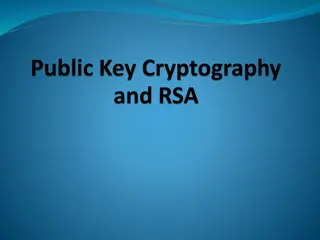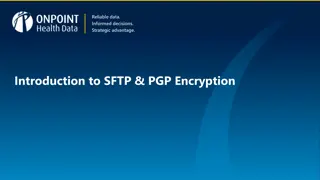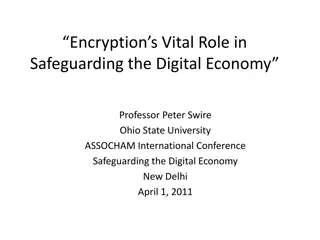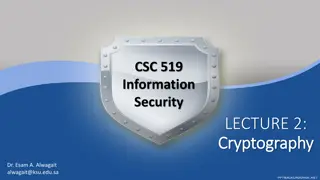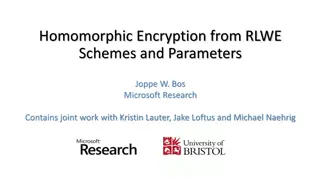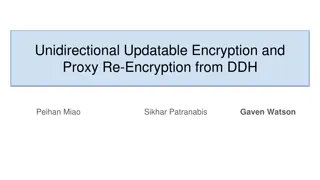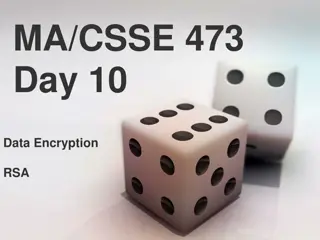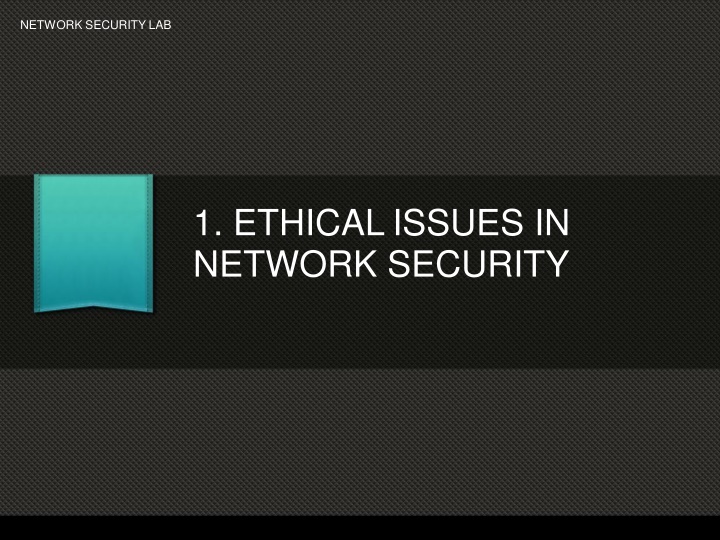
Network Security: Ethical Issues and Countermeasures
Explore ethical issues in network security, countermeasures, types of networks like LAN, MAN, WAN, and the devices that make up a network. Discover the threats faced in network security and the importance of safeguarding information in this digital age.
Download Presentation

Please find below an Image/Link to download the presentation.
The content on the website is provided AS IS for your information and personal use only. It may not be sold, licensed, or shared on other websites without obtaining consent from the author. If you encounter any issues during the download, it is possible that the publisher has removed the file from their server.
You are allowed to download the files provided on this website for personal or commercial use, subject to the condition that they are used lawfully. All files are the property of their respective owners.
The content on the website is provided AS IS for your information and personal use only. It may not be sold, licensed, or shared on other websites without obtaining consent from the author.
E N D
Presentation Transcript
NETWORK SECURITY LAB 1. ETHICAL ISSUES IN NETWORK SECURITY
Coverage COUNTER MEASURES INTRODUCTION ISSUES NETWORKS
Coverage INTRODUCTION COUNTER MEASURES NETWORK ISSUES
Coverage COUNTER MEASURES INTRODUCTION NETWORK ISSUES
What is a Network? Group of computers interconnected. Sharing Resources Types of Networks: LAN (Local Area Network) MAN (Metro Area Network) WAN (Wide Area Network)
Local Area Network (LAN) Configured in a smaller Area ex: an office, Home, etc., Peer-Peer Network Centralized Network Computer connected to switch/hub. Hub Server Hub Internet Hub Server - Internet
Metro Area Network (MAN) Network Configured to interconnect offices in a city. Ex: Branches in a same city/state. Centralized Network Branches are connected through: Telephonelines Internet Satellite
Wide Area Network (WAN) Network Configured to interconnect branches in a country or across countries. Centralized Network Connected through: Satellites DedicatedLeased Lines Largest WAN : Internet
Devices that make a Network Switches Computers Wireless Printers Smartphones Servers Cables
Coverage COUNTER MEASURES INTRODUCTION NETWORK ISSUES
Network Security Issues/Threats Network security is prime most concern of all organizations. The information passed between Computers is very vulnerable. In the last decade there has been a massive increase of Hackers & Crackers creating: Viruses Ransomware Other malicious threats
Security Threats The following is a list of commonly known security threats Viruses, Worms and Trojans SPAM Phishing Packet sniffing Malicious Websites PasswordAttacks Improperly secured wired/wireless networks
Viruses, Worms and Trojans Virus: Amalicious program or code that acts by attaching to a host program, once loaded on to the computer and corrupts data and system services. Ex: MyDoom, Sasser & Netsky, etc., Worms: Similar to Virus, but doesn t need a host program to operate, it can operate on its own. Ex: MSBlast!, Michelangelo, ILOVEYOU Trojans: Aprogram disguised, contains harmful codes inside that may target data and file allocation table, thereby causing severe damage to computer.
SPAM and Phishing SPAM: Flooding a computer or a network with millions of copies of the same message. Affects the performance of the target by slowing down the network and results in Denial of Service (DOS) Fraud communication emails disguised to as Phishing: legitimate personal/financial information of targets. collect
Packet Sniffing Malicious Sites Packet Sniffer: A program that enables listening onto the network (eavesdropping). Monitors the traffic on the network (packets). Also capable of capturing the packets from network channel. Malicious Sites: Websites that contain malicious codes and scripts. Capable of capturing data from computers.
PasswordAttacks PasswordAttacks: Used to determine the password of any user on a network. Achieved through automatic tools. Example: Brute force. Once password is determined, the hacker can easily access all the personal information stored on the computer.
Open wire and wireless networks Threats: Open networks are the most favorite entry points of hackers. Shared data on open network can cause serious damages. Nodes (computers) on open network can be used as botnets infections/malware deeper into network levels. to forward the
How to protect your networks? Threats: Viruses, Worms & Trojans Countermeasures: Antiviruses, hardware and software IDS/IPS SPAM filters enable email SPAM services. Phishing filters enabled email Phishing and web browsing clients Obtain Strong Encryption Packet Sniffers technology. Obtain security suite to detect Malicious Sites infected sites Strong Password policies throughout the network users PasswordAttacks
Protect your Network - II Other measures include Updating Operating System with latest service packs. Updating Antivirus/IDS/IPS software with latest databases of signatures. Following network maintenance best practices such as: Monitor access permissions regularly on network. Devising a Security policy and strict adherence. File Integrity Management (FIM) Solutions. Keep up with existing and future threads.
REPORT WORK Prepare a report on recent ransomware attacks : Wannacry and Petya: What was the attack (type, source, point of origination) What infection did it cause. Countermeasures taken.

